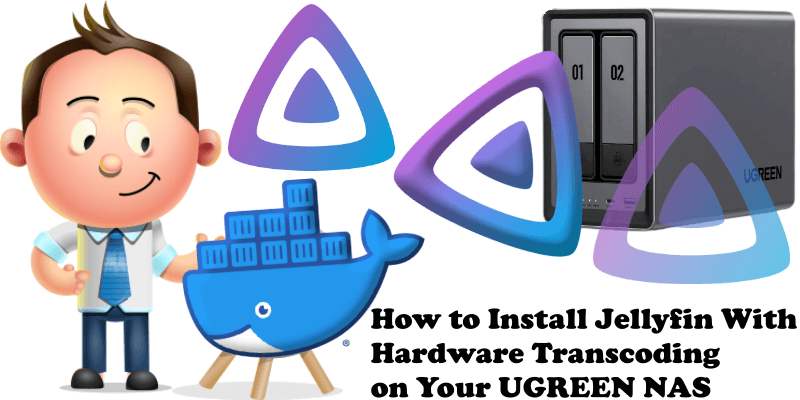
Jellyfin is a free Software Media System that puts you in control of managing and streaming your media. It is an alternative to the proprietary Emby and Plex, to provide media from a dedicated server to end-user devices via multiple apps. Jellyfin is the volunteer-built media solution that puts you in control of your media. Stream to any device from your own server, with no strings attached. There are no premium licenses or features, and no hidden agendas; just a team who wants to build something better and work together to achieve it. Hardware transcoding makes media streaming from your NAS faster and more efficient. In this step by step guide I will show you how to install Jellyfin with Hardware Transcoding on your UGREEN NAS using Docker & Portainer.
STEP 1
Please Support My work by Making a Donation.
STEP 2
Install Portainer using my step by step guide. If you already have Portainer installed on your UGREEN NAS, skip this STEP. Attention: Make sure you have installed the latest Portainer version.
STEP 3
Add Read & Write Permissions to the Docker Folder. If you have already added the Read and Write Permissions to the Docker Folder, skip this STEP.
STEP 4
Go to File Manager and open the docker folder. Inside the docker folder, create one new folder and name it jellyfinht. Follow the instructions in the image below.
Note: Be careful to enter only lowercase, not uppercase letters.
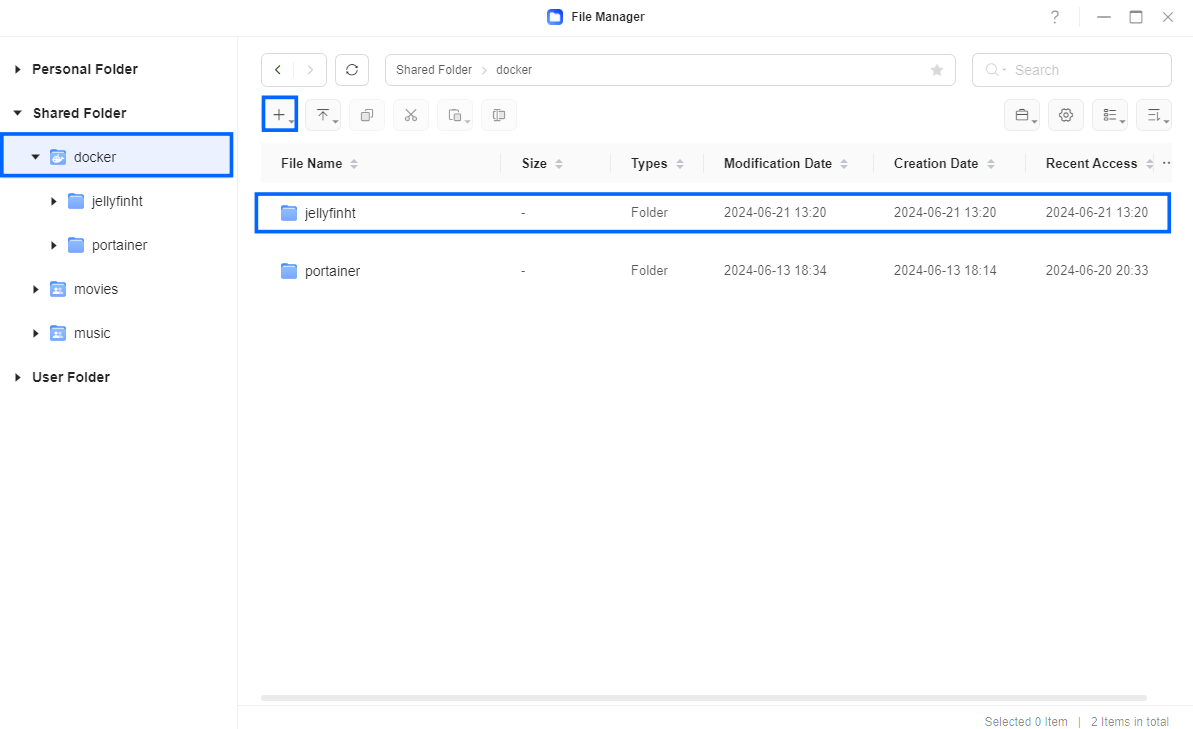
STEP 5
Now create three new folders inside the jellyfinht folder that you created at STEP 4 and name them cache, config and logs. Follow the instructions in the image below.
Note: Be careful to enter only lowercase, not uppercase letters.

STEP 6
Log into Portainer using your username and password. On the left sidebar in Portainer, click on Home then Live connect. Follow the instructions in the image below.

On the left sidebar in Portainer, click on Stacks then + Add stack. Follow the instructions in the image below.

STEP 7
In the Name field type in jellyfin. Follow the instructions in the image below.
services:
jellyfin:
image: jellyfin/jellyfin:latest
container_name: Jellyfin-HT
user: 999:10
group_add:
- 105
environment:
TZ: Europe/Bucharest
volumes:
- /volume1/docker/jellyfinht/config:/config:rw
- /volume1/docker/jellyfinht/cache:/cache:rw
- /volume1/docker/jellyfinht/logs:/logs:rw
- /volume1/movies:/media:rw
- /volume1/music:/music:rw
devices:
- /dev/dri/renderD128:/dev/dri/renderD128
- /dev/dri/card0:/dev/dri/card0
- /dev/dri:/dev/dri
restart: on-failure:5
network_mode: host
Note: Before you paste the code above in the Web editor area below, change the value for TZ. (Select your current Time Zone from this list.)
Note: Before you paste the code above in the Web editor area below, change the value numbers for user with your own UID and GID values. (Follow my step by step guide on how to do this.) 999 is my personal UID value and 10 is my personal GID value. You have to type in your own values.
Note: Before you paste the code above in the Web editor area below, change the movies and music path folders with your own movies and music path folders. For example: my movies folder, where my media is, is in the Shared Folder /volume1/movies and my music folder, where my music is, is located in Shared Folder /volume1/music
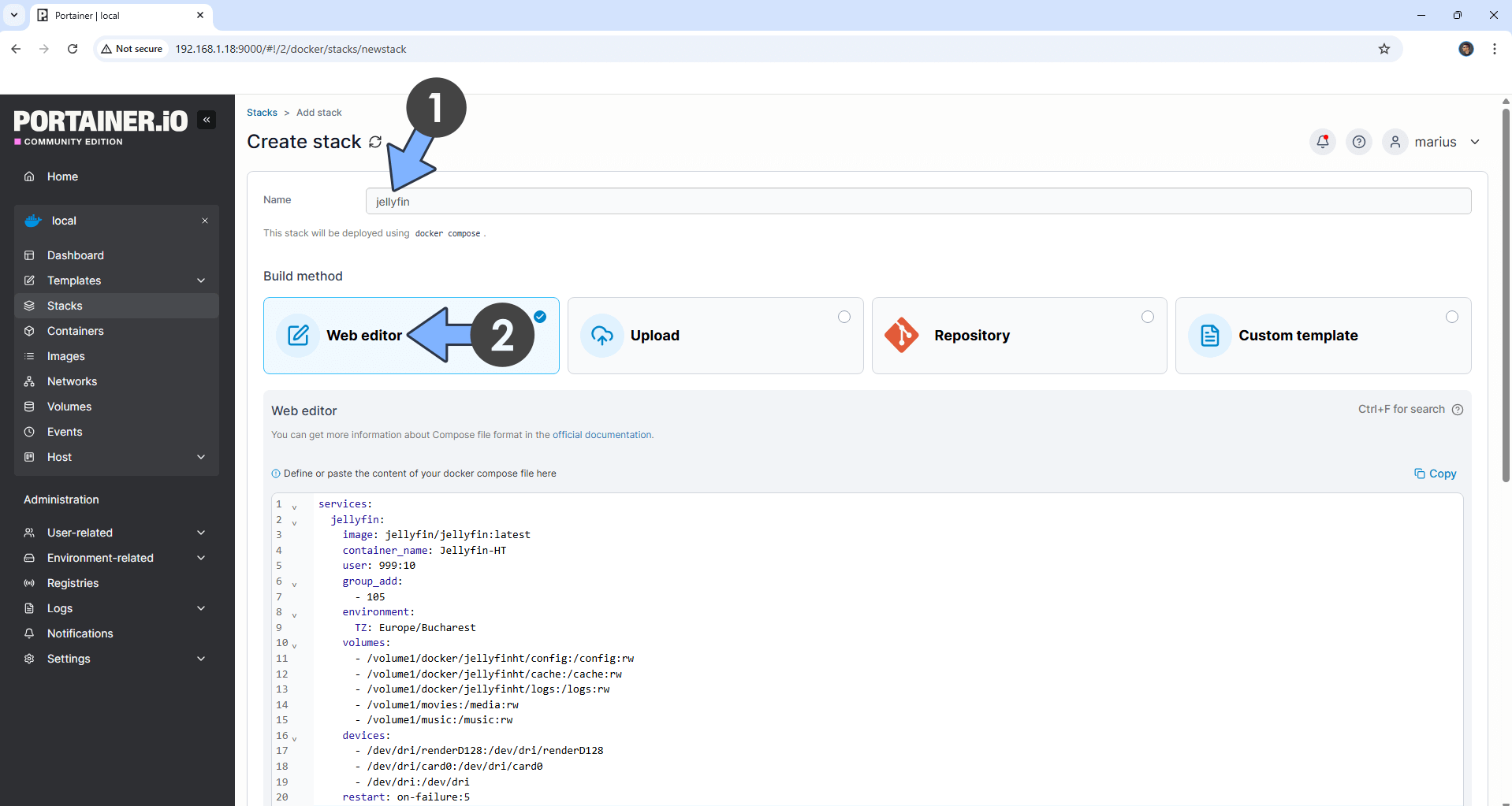
STEP 8
Scroll down on the page until you see a button named Deploy the stack. Click on it. Follow the instructions in the image below. The installation process can take up to a few minutes. It will depend on your Internet speed connection.
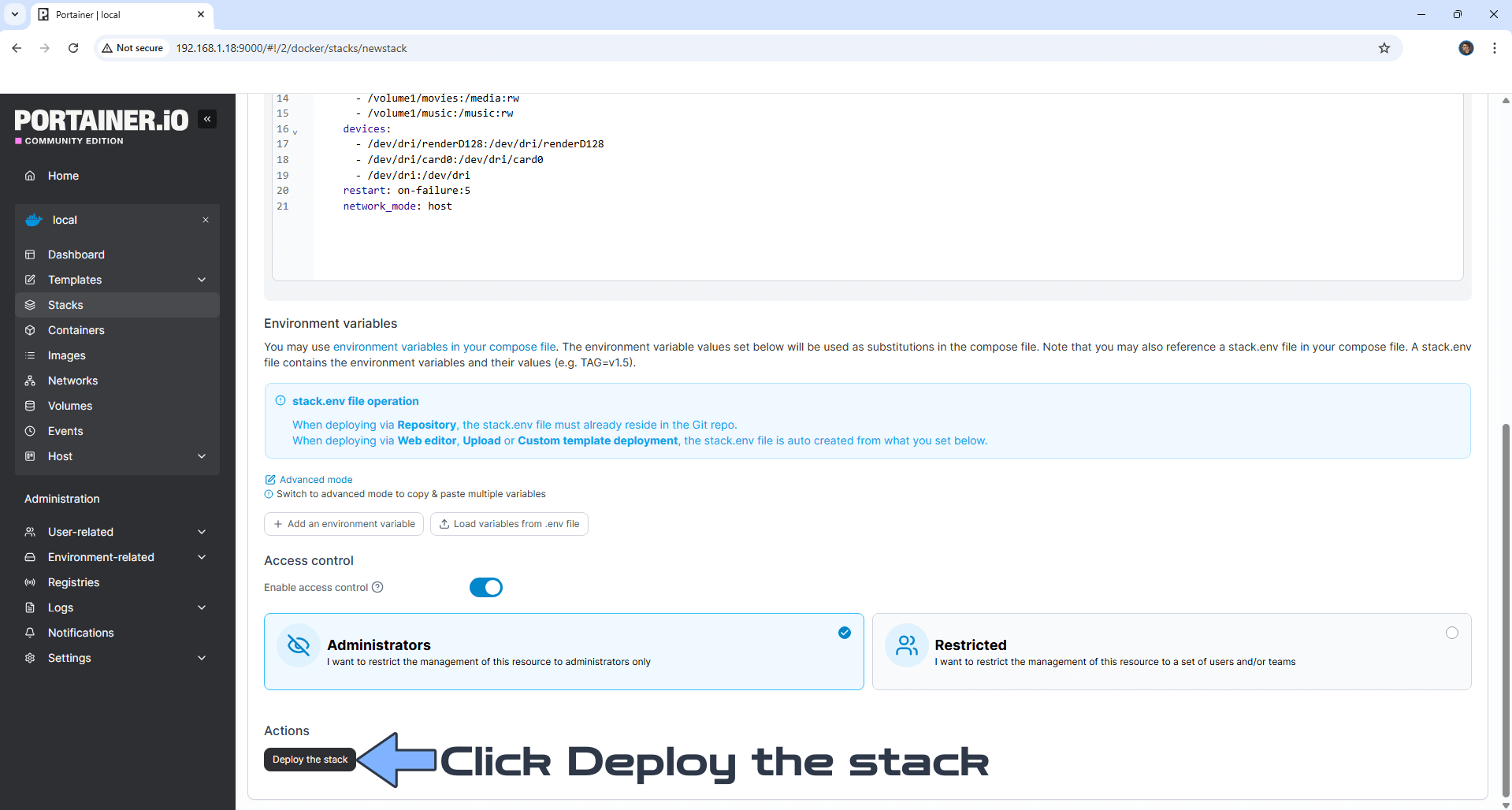
STEP 9
If everything goes right, you will see the following message at the top right of your screen: “Success Stack successfully deployed“.

STEP 10
🟢Please Support My work by Making a Donation. Almost 99,9% of the people that install something using my guides forget to support my work, or just ignore STEP 1. I’ve been very honest about this aspect of my work since the beginning: I don’t run any ADS, I don’t require subscriptions, paid or otherwise, I don’t collect IPs, emails, and I don’t have any referral links from Amazon or other merchants. I also don’t have any POP-UPs or COOKIES. I have repeatedly been told over the years how much I have contributed to the community. It’s something I love doing and have been honest about my passion since the beginning. But I also Need The Community to Support me Back to be able to continue doing this work.
STEP 11
The installation process can take up to a few seconds/minutes. It will depend on your Internet speed connection. Now open your browser and type in http://ugreennas-ip-address:8096 If everything goes right, you will see the Jellyfin Setup page. Select your display language then click Next. Follow the instructions in the image below.
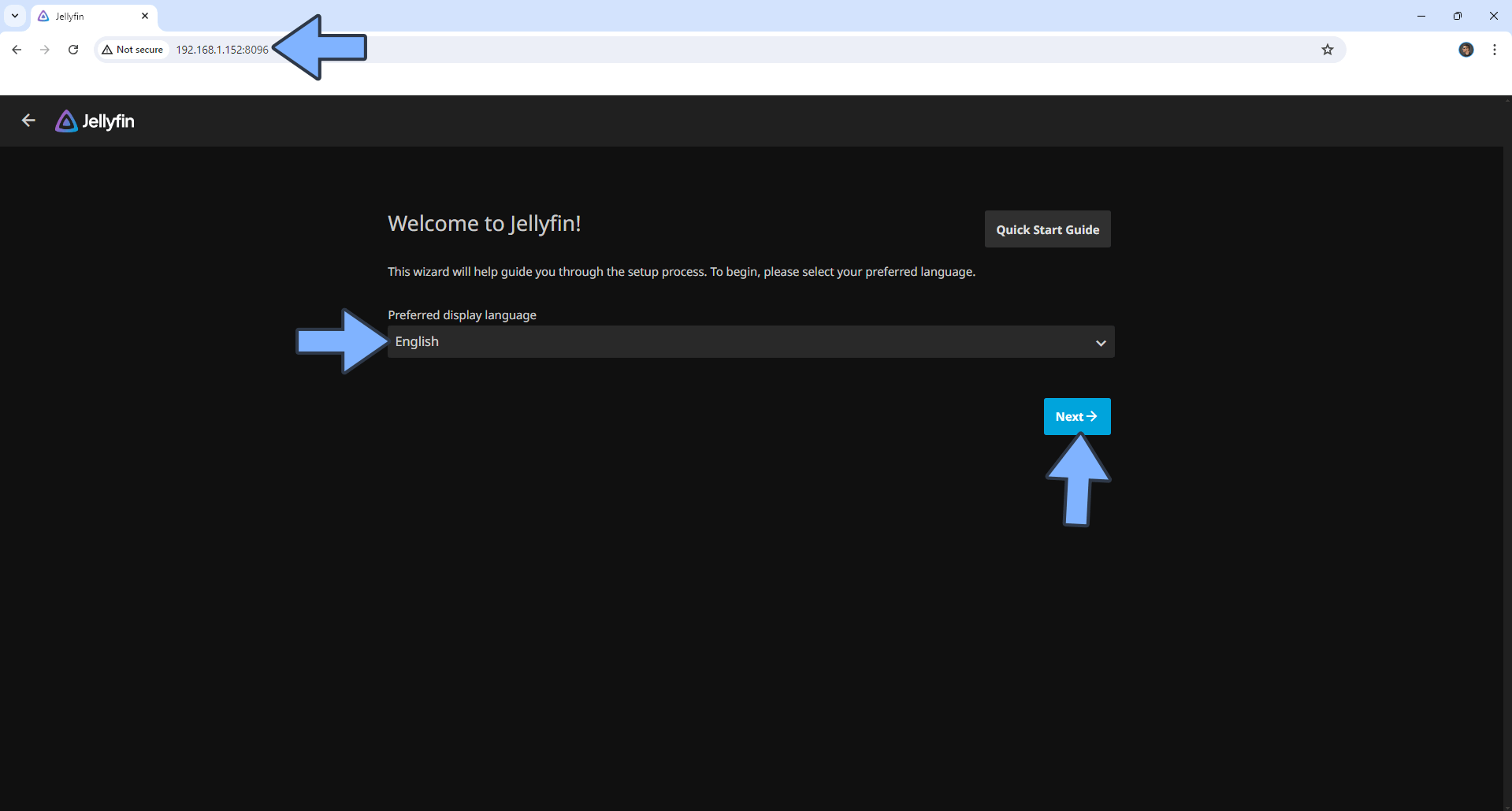
STEP 12
Type in your own Username and Password then click Next. Follow the instructions in the image below.
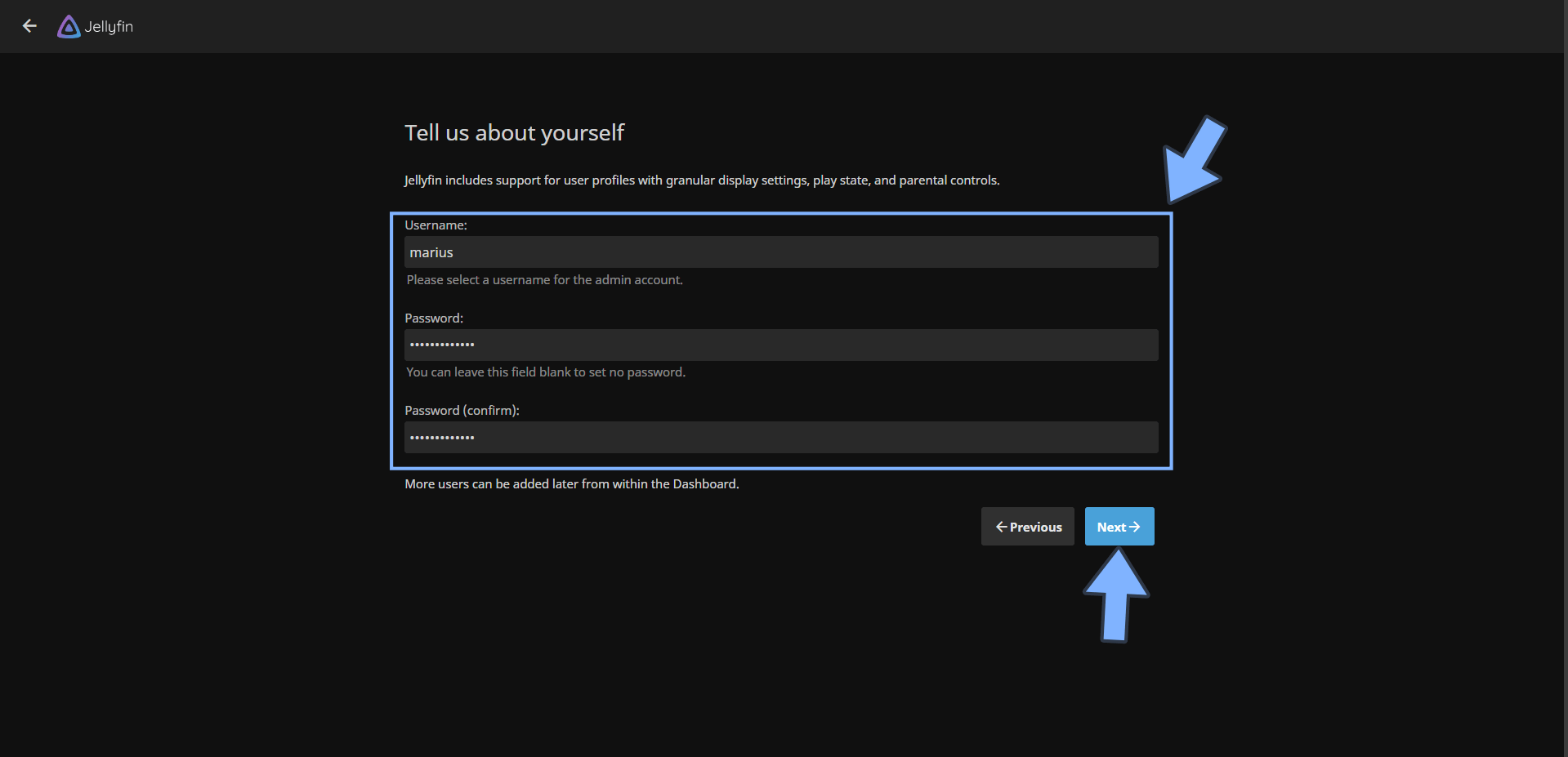
STEP 13
Click Add Media Library to add your first library. Follow the instructions in the image below.
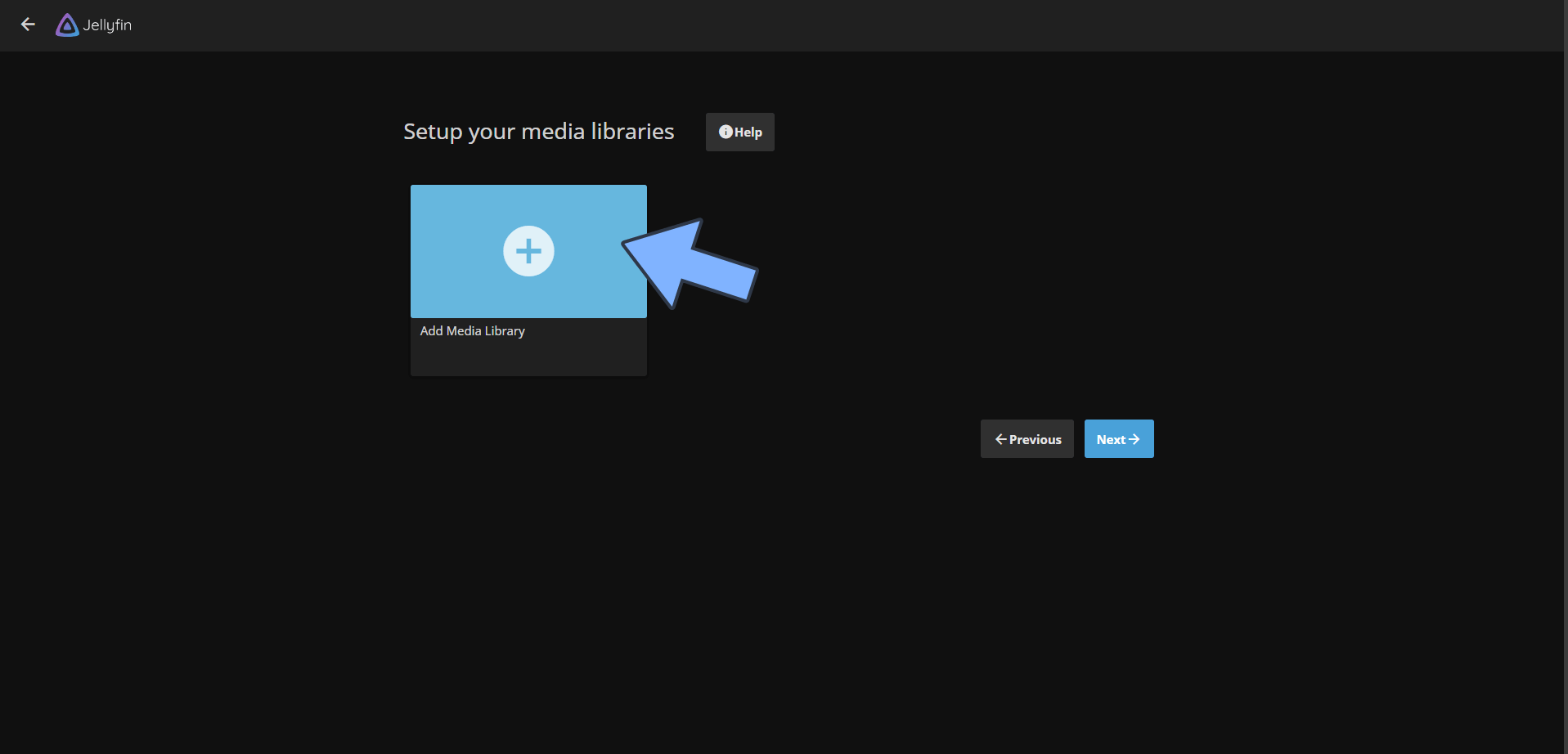
STEP 14
Select Movies as Content type, then click Folders +. Follow the instructions in the image below.
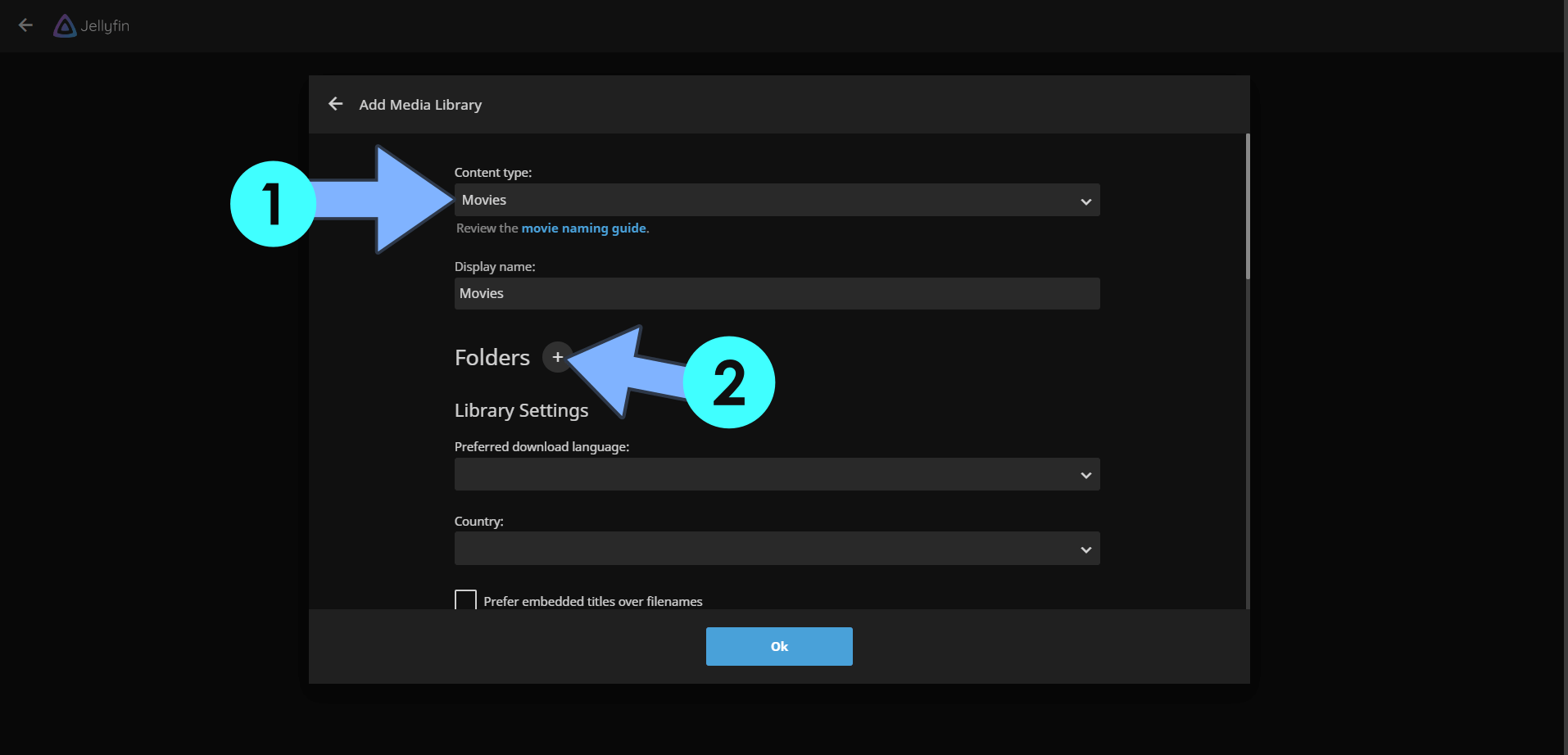
STEP 15
Type in /media then click OK. Follow the instructions in the image below.
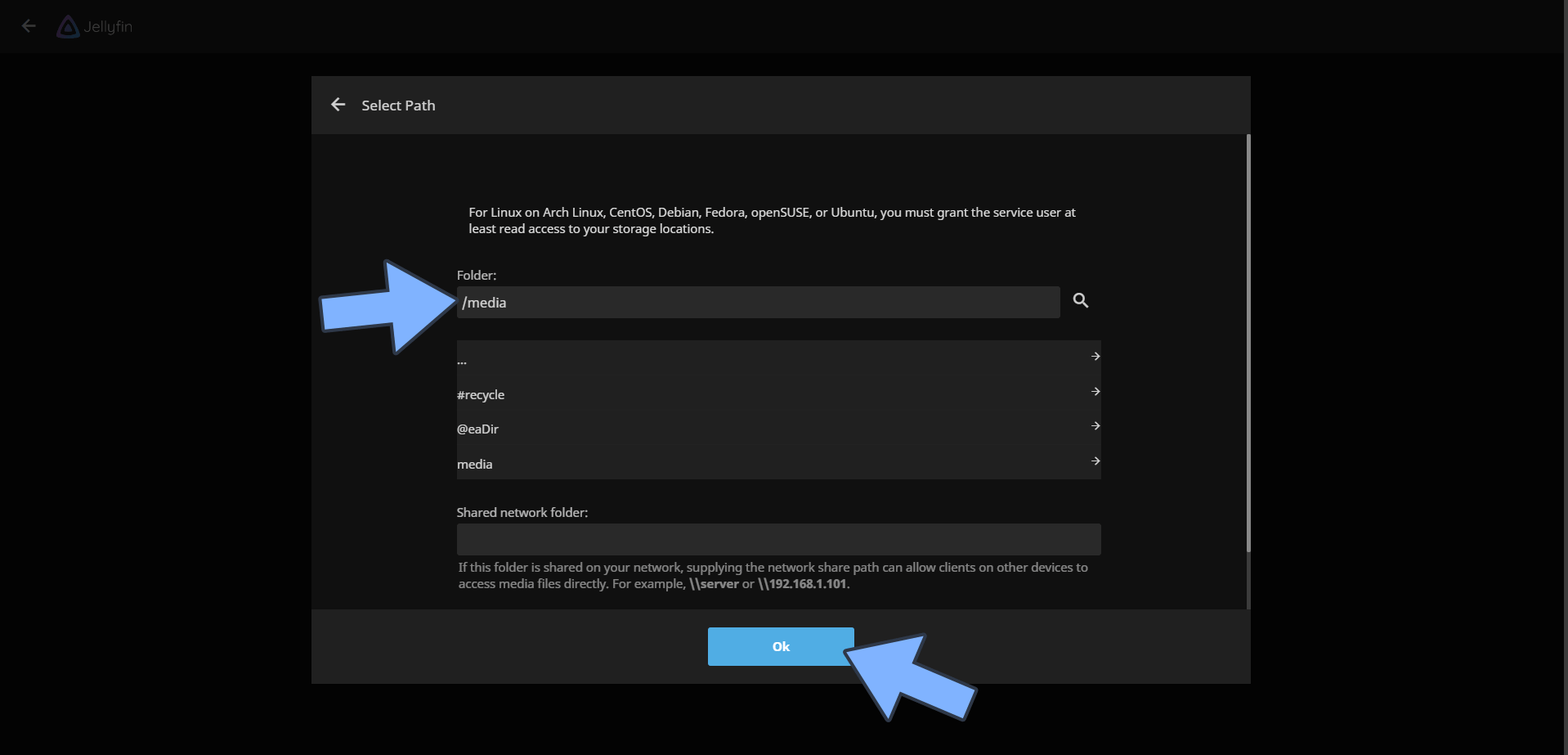
STEP 16
Scroll down the page until you find the OK button. Click on it. Follow the instructions in the image below.
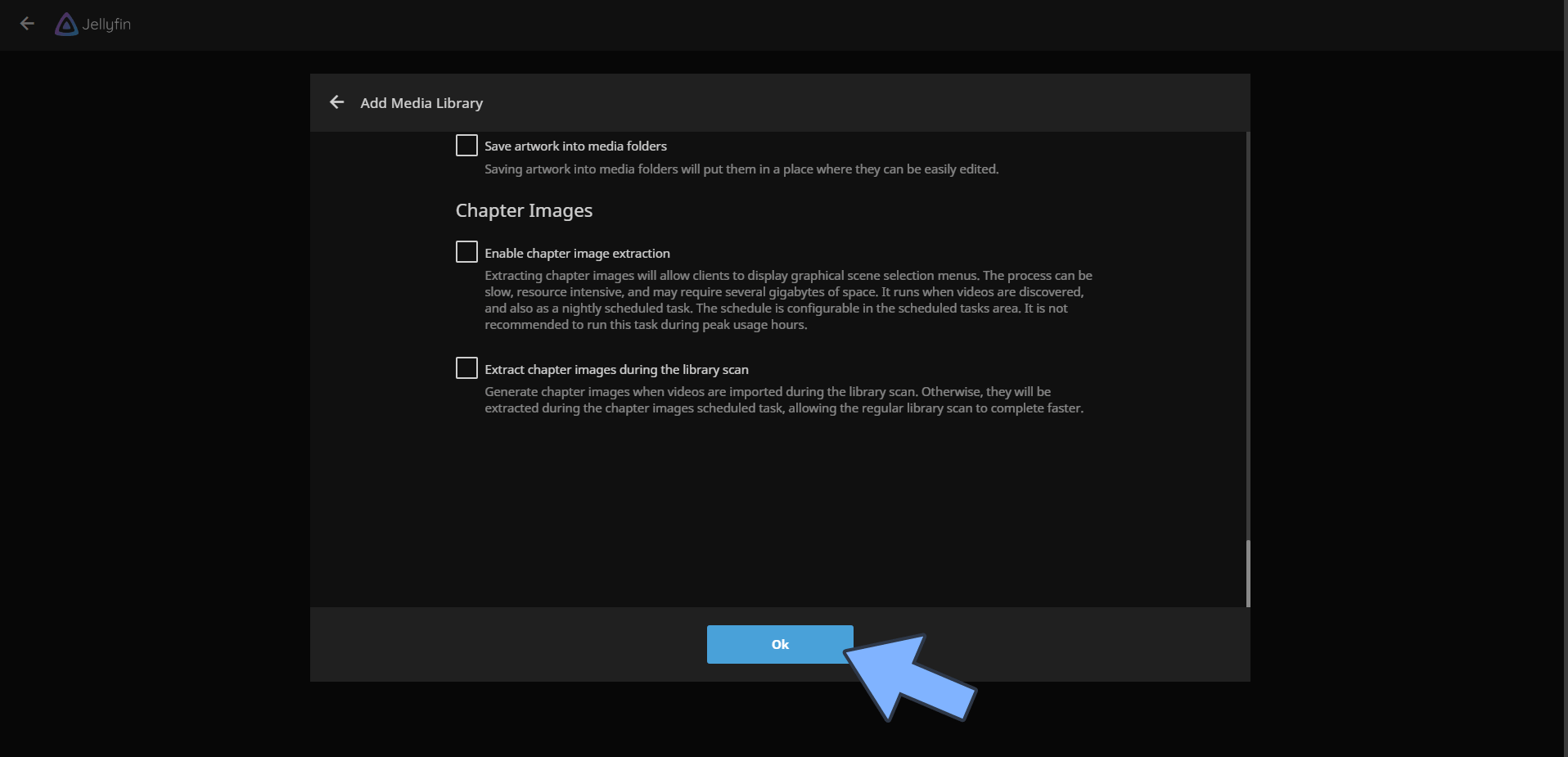
STEP 17
Now add the music folder if you have one or click Next if you don’t have one. Follow the instructions in the image below.
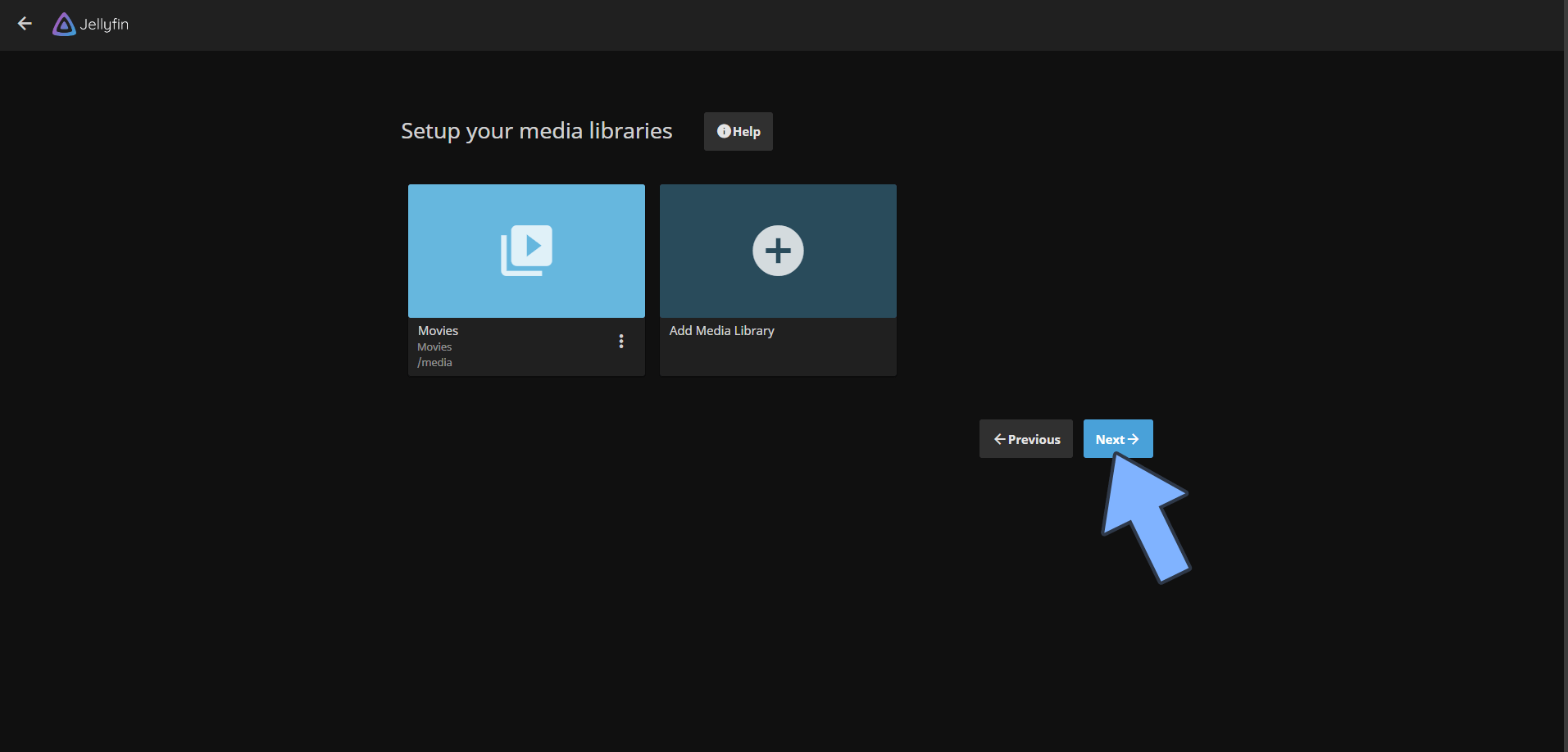
STEP 18
Choose the metadata Language and Country then click Next. Follow the instructions in the image below.
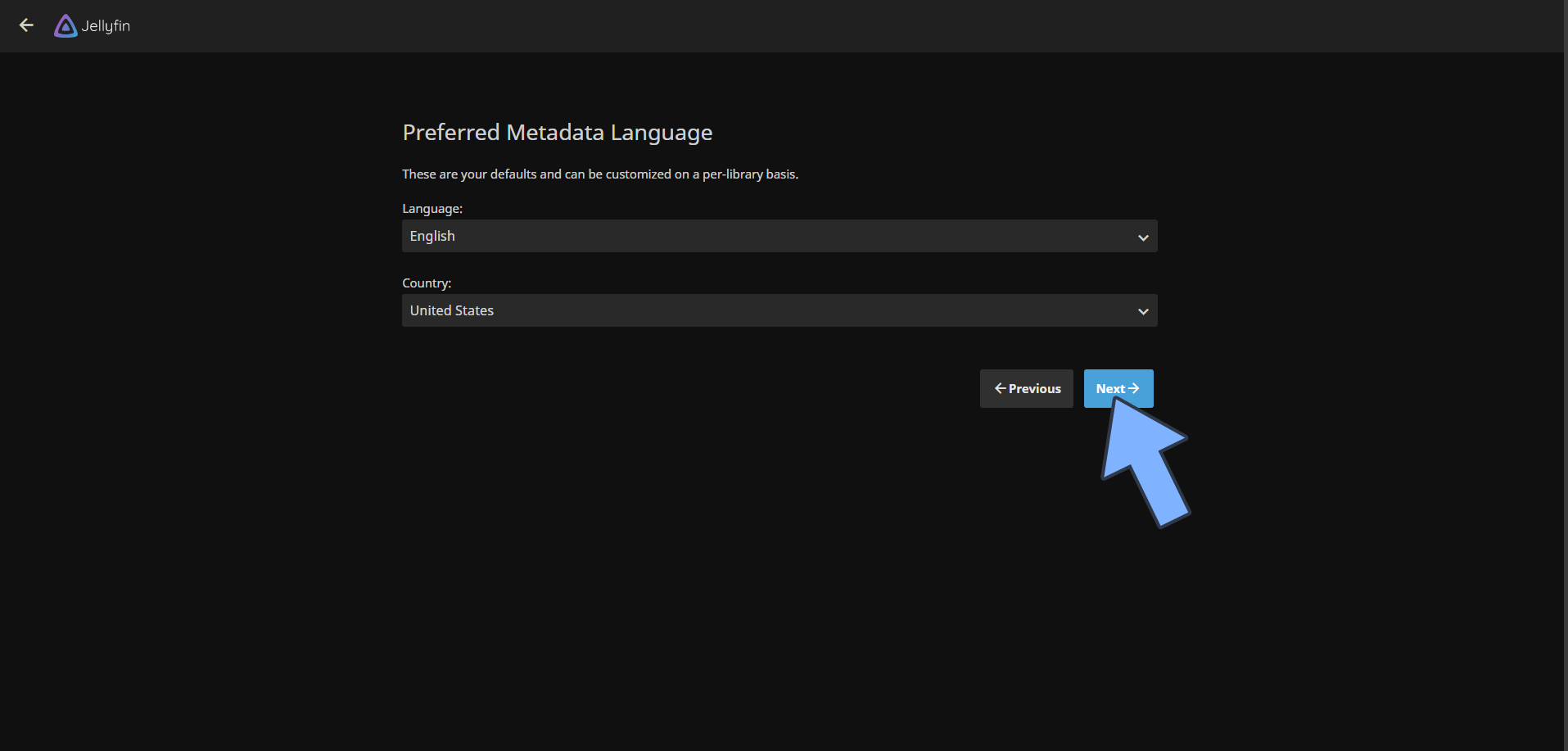
STEP 19
Check Allow remote connections to this server then click Next. Follow the instructions in the image below.
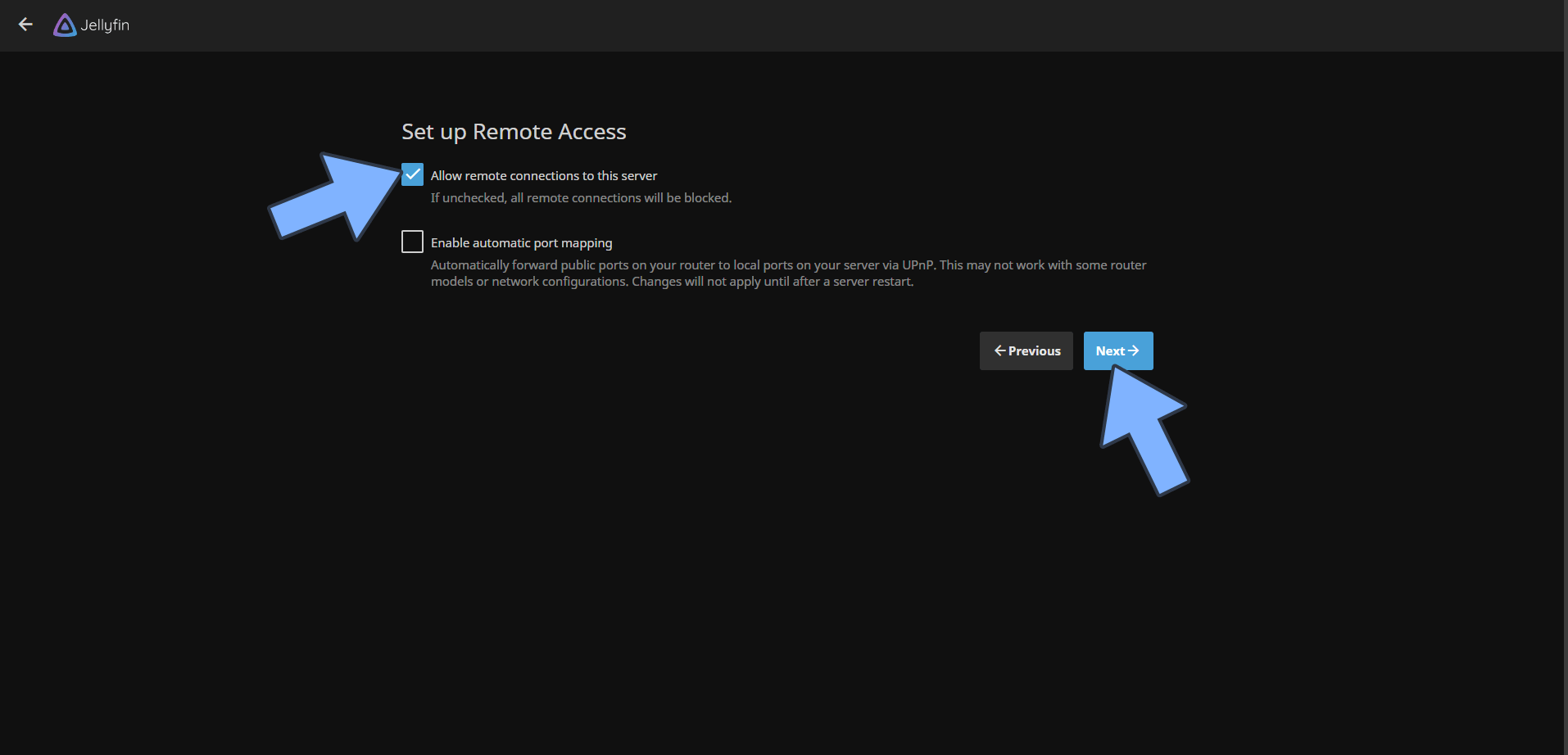
STEP 20
Click Finish. Follow the instructions in the image below.
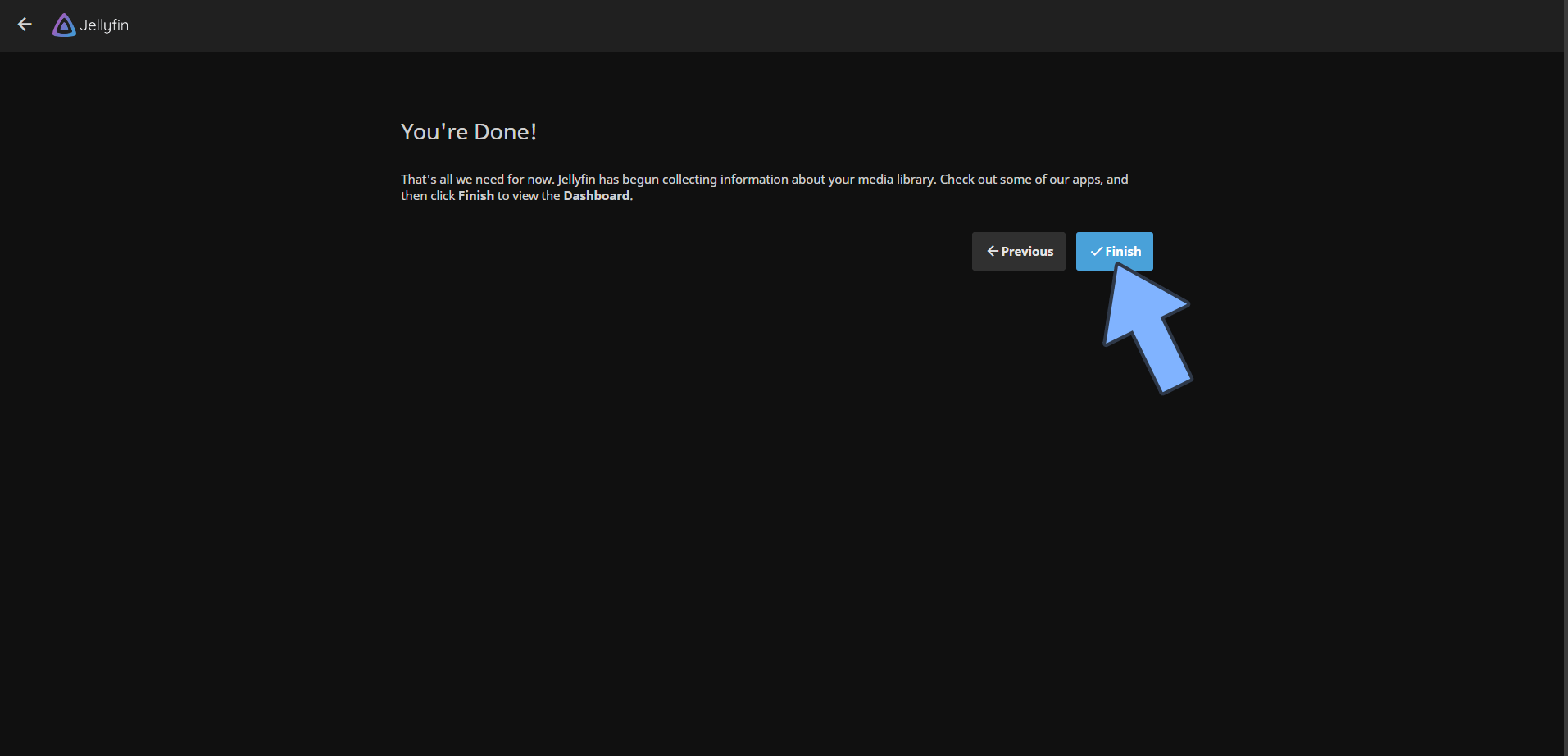
STEP 21
Sign in using your own Username and Password that you have previously created at STEP 12 then click Sign In. Follow the instructions in the image below.
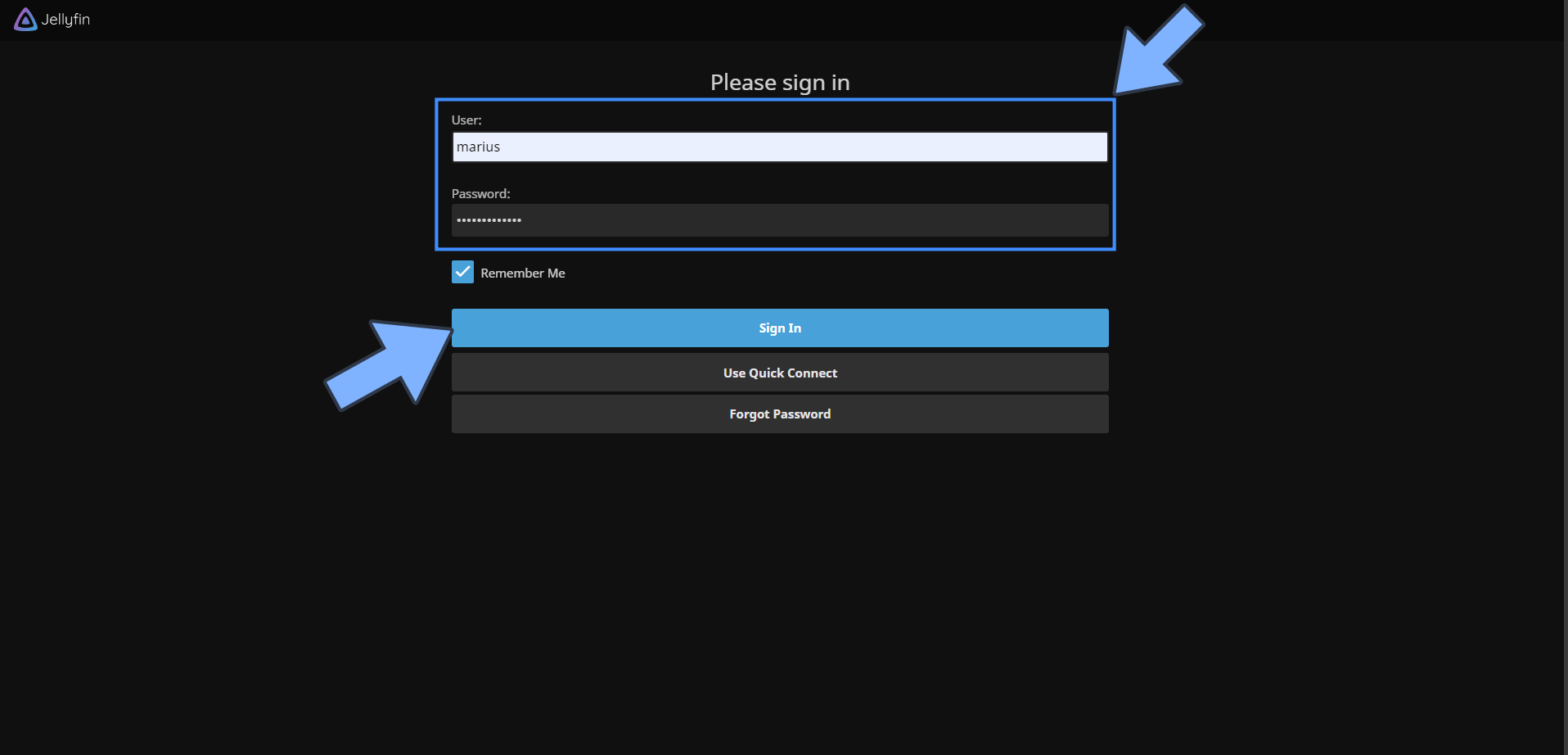
STEP 22
On the top left of the page click on the 3 horizontal lines. Follow the instructions in the image below.
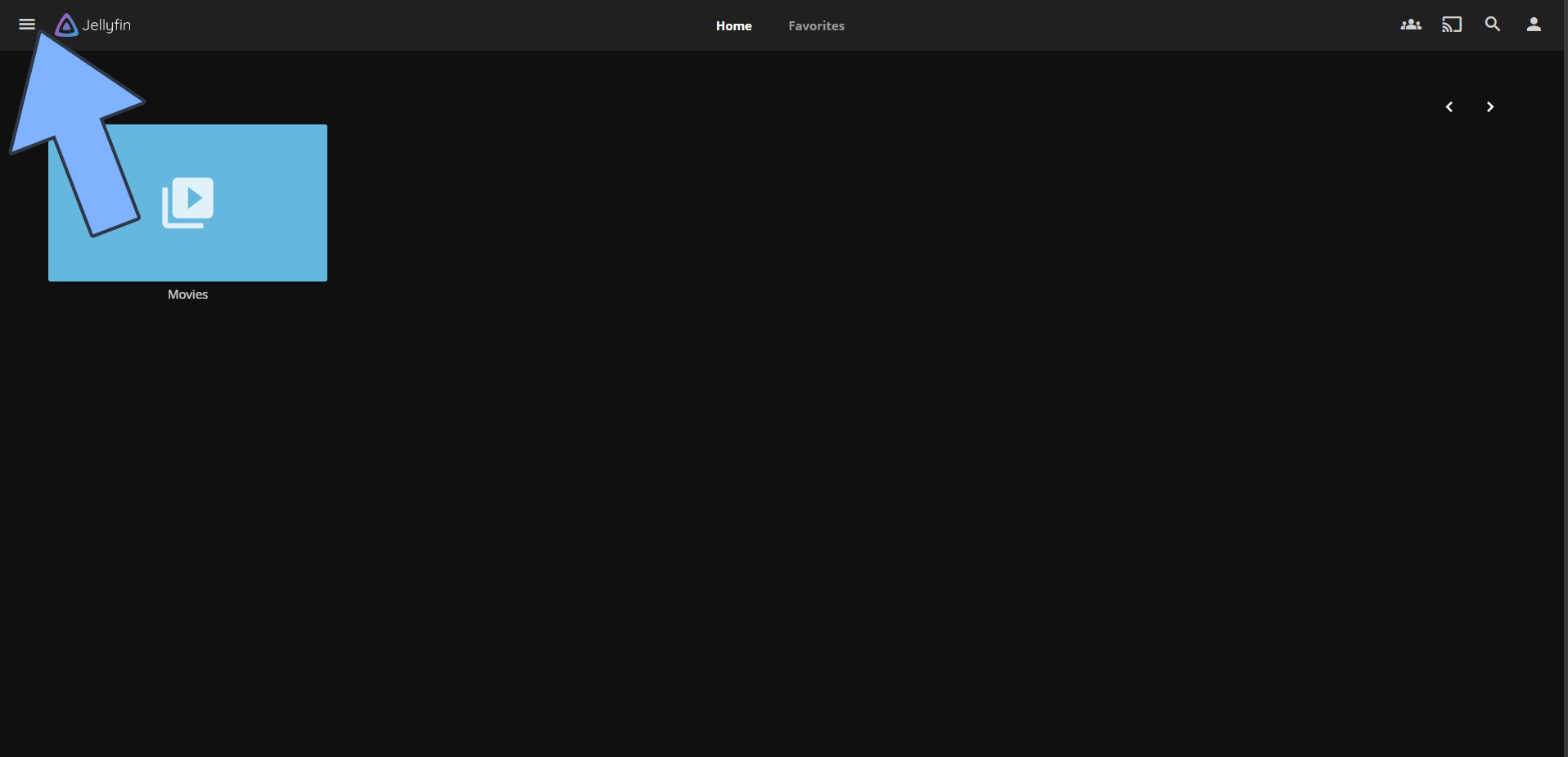
STEP 23
Click Dashboard. Follow the instructions in the image below.
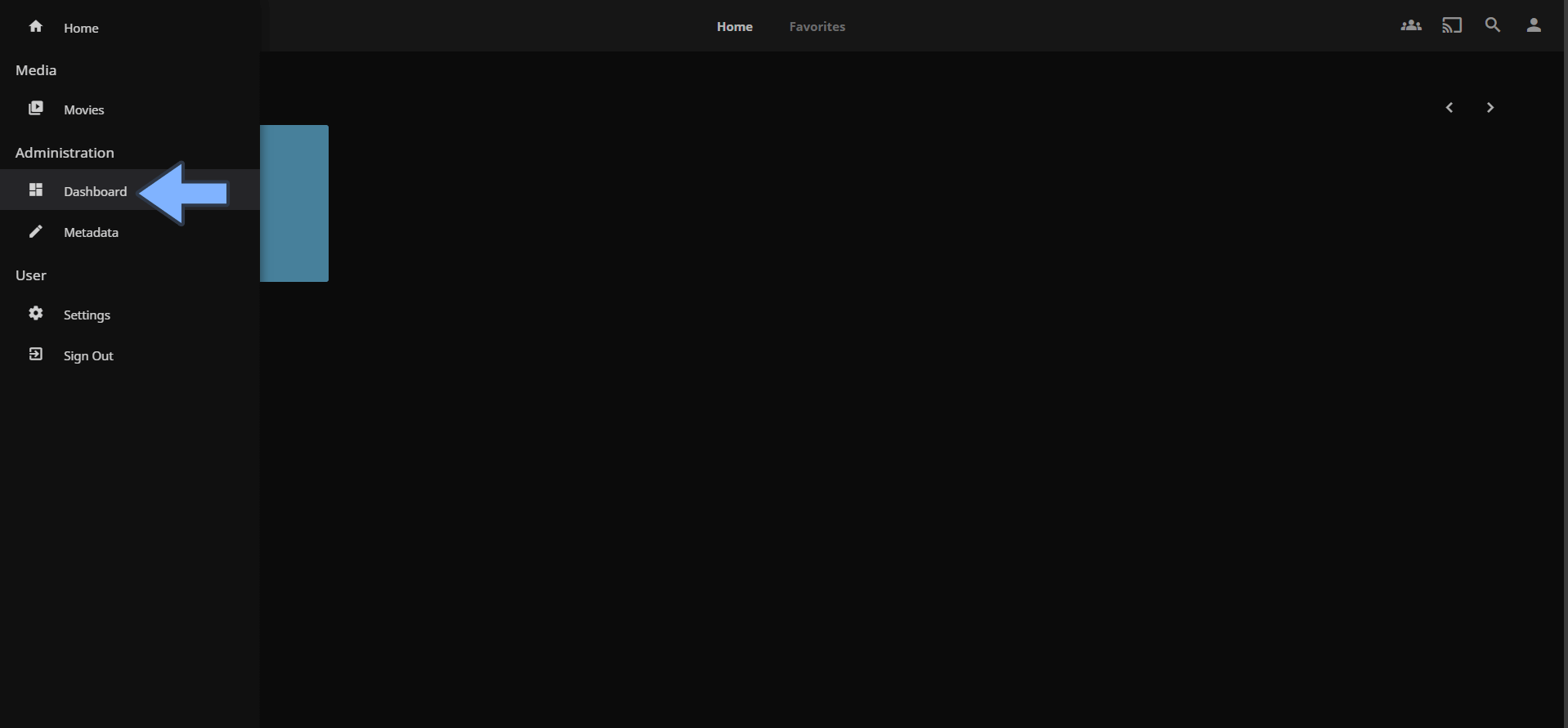
STEP 24
On the left sidebar click Playback, then Transcoding. From the dropdown menu select Intel QuickSync (QSV). Follow the instructions in the image below.
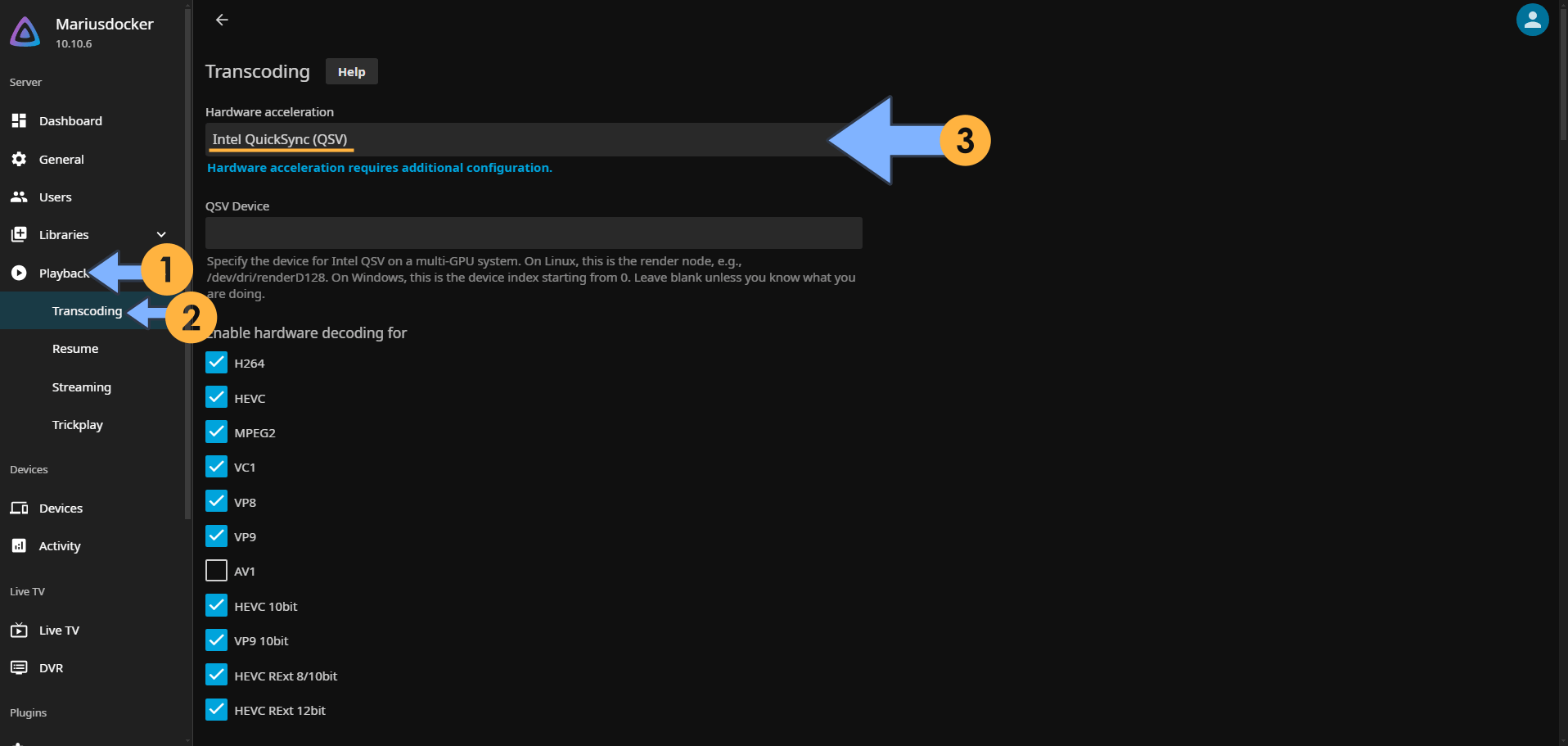
STEP 25
Check the following options:
- H264
- HEVC
- MPEG2
- VC1
- VP8
- VP9
- HEVC 10bit
- VP9 10bit
- Prefer OS native DXVA or VA-API hardware decoders
- Enable hardware encoding
- Allow encoding in HEVC format
- Enable VPP Tone mapping
Scroll down the page until you find the Save button. Click on it. Follow the instructions in the image below.
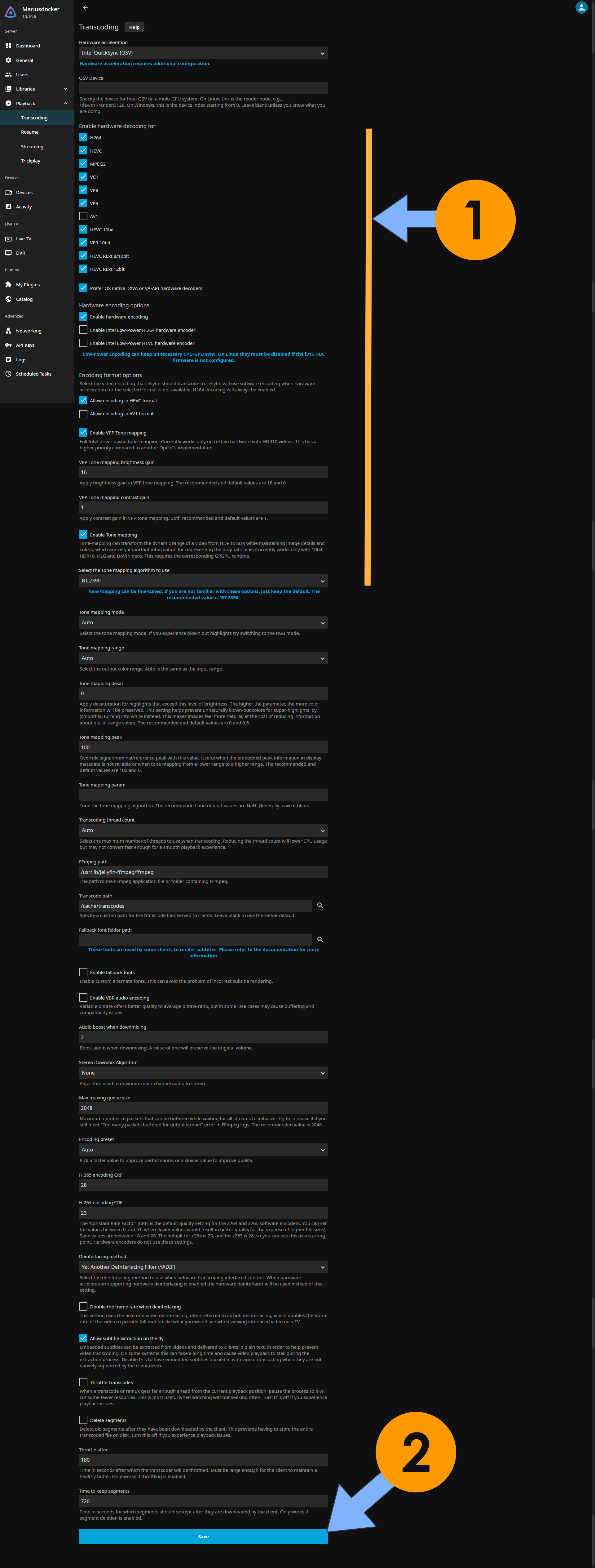
STEP 26
Click Got it. Follow the instructions in the image below.
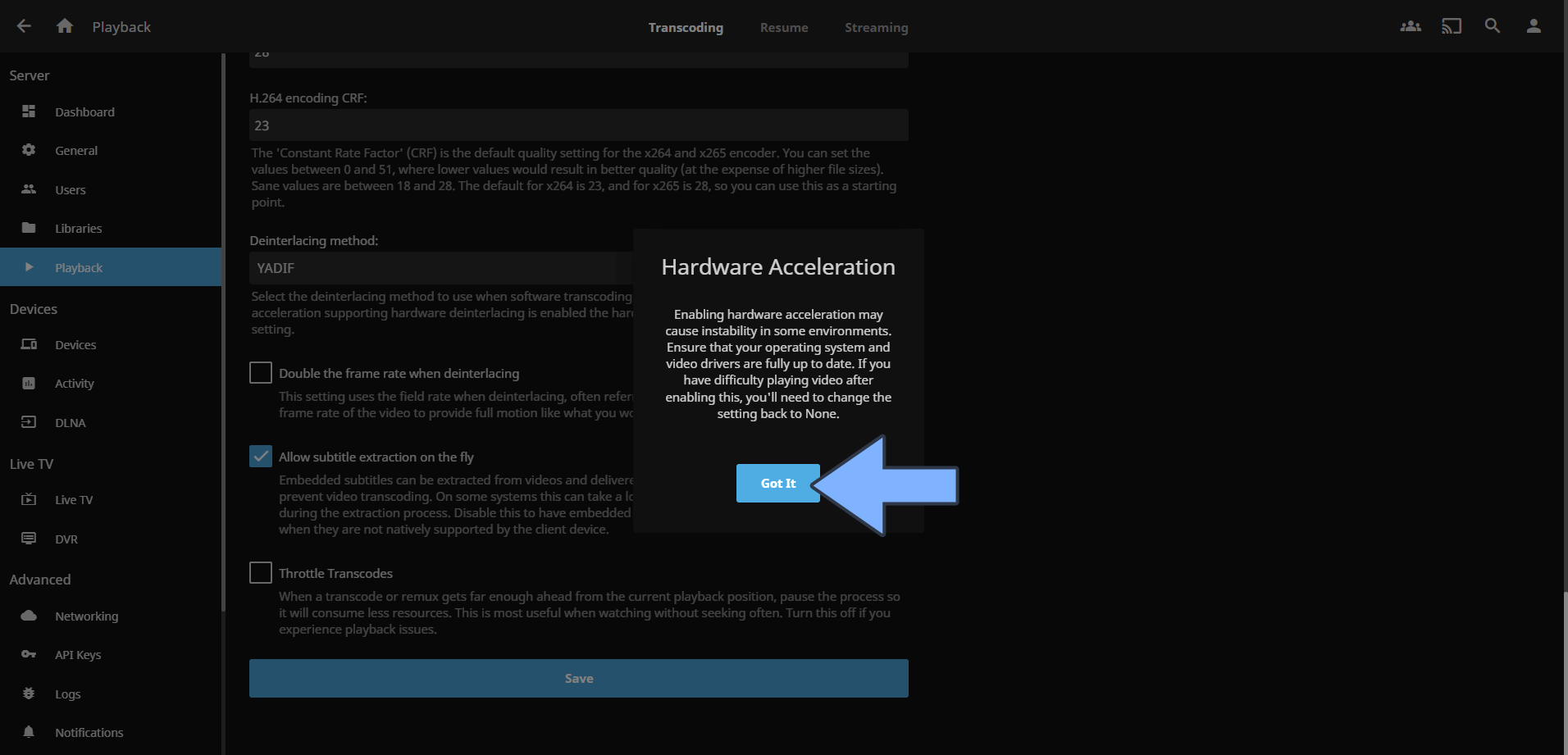
Enjoy Jellyfin with Hardware Transcoding on your UGREEN NAS!
Note: If you want to run the Jellyfin container over HTTPS, check out How to Run Docker Containers Over HTTPS on Your UGREEN NAS.
Note: To find your render group number (group_add) in UGREEN, use the following command: getent group render | cut -d: -f3
🆙Note/Update/Container: How to Update Your Docker Containers on UGREEN NAS Using Portainer.
🐳Note: How to Create Docker Shortcuts on Desktop.
🆕Note: How to Update Portainer to the latest version.
🆕Note: How to Clean Docker.
This post was updated on Monday / December 15th, 2025 at 10:43 PM
